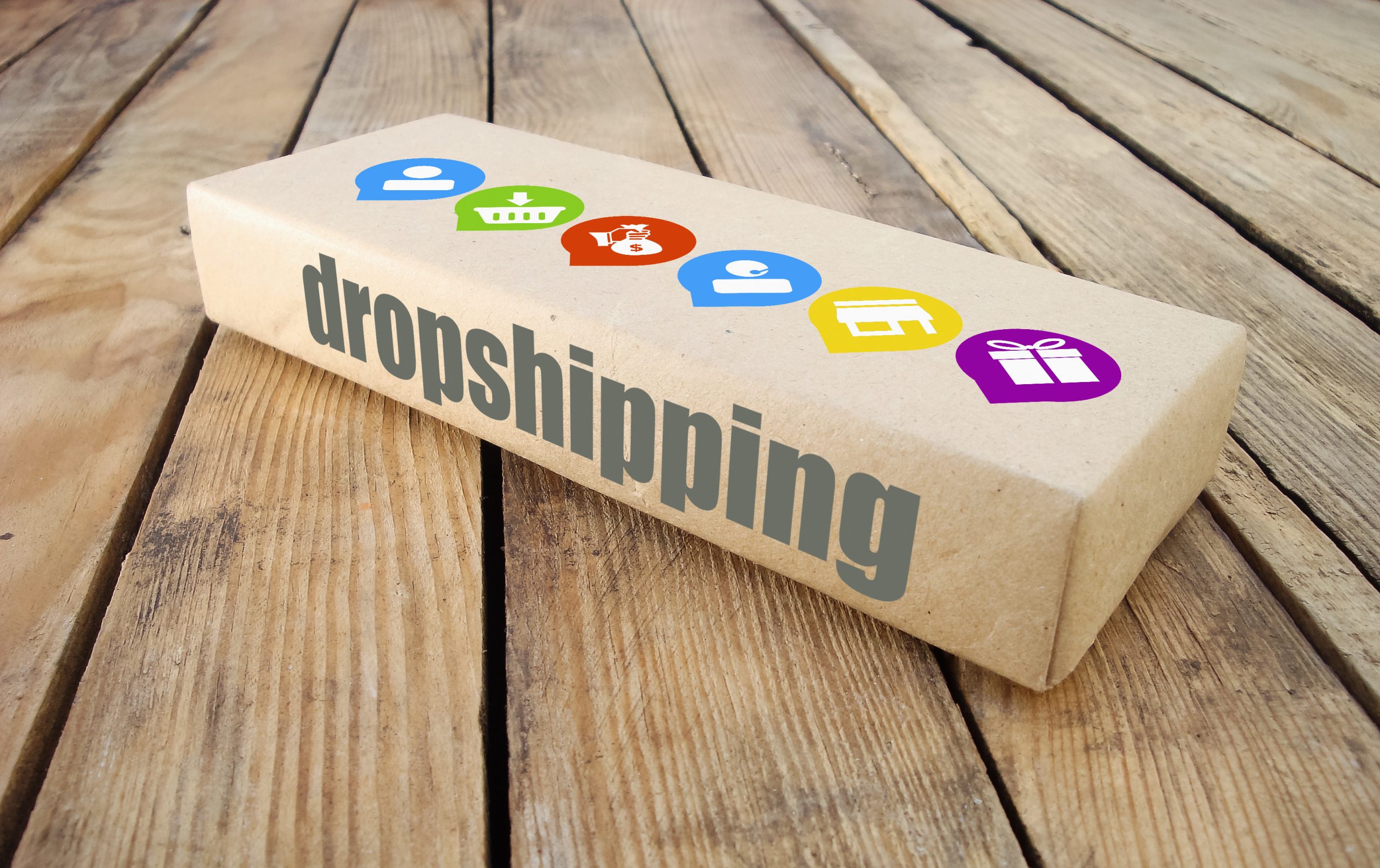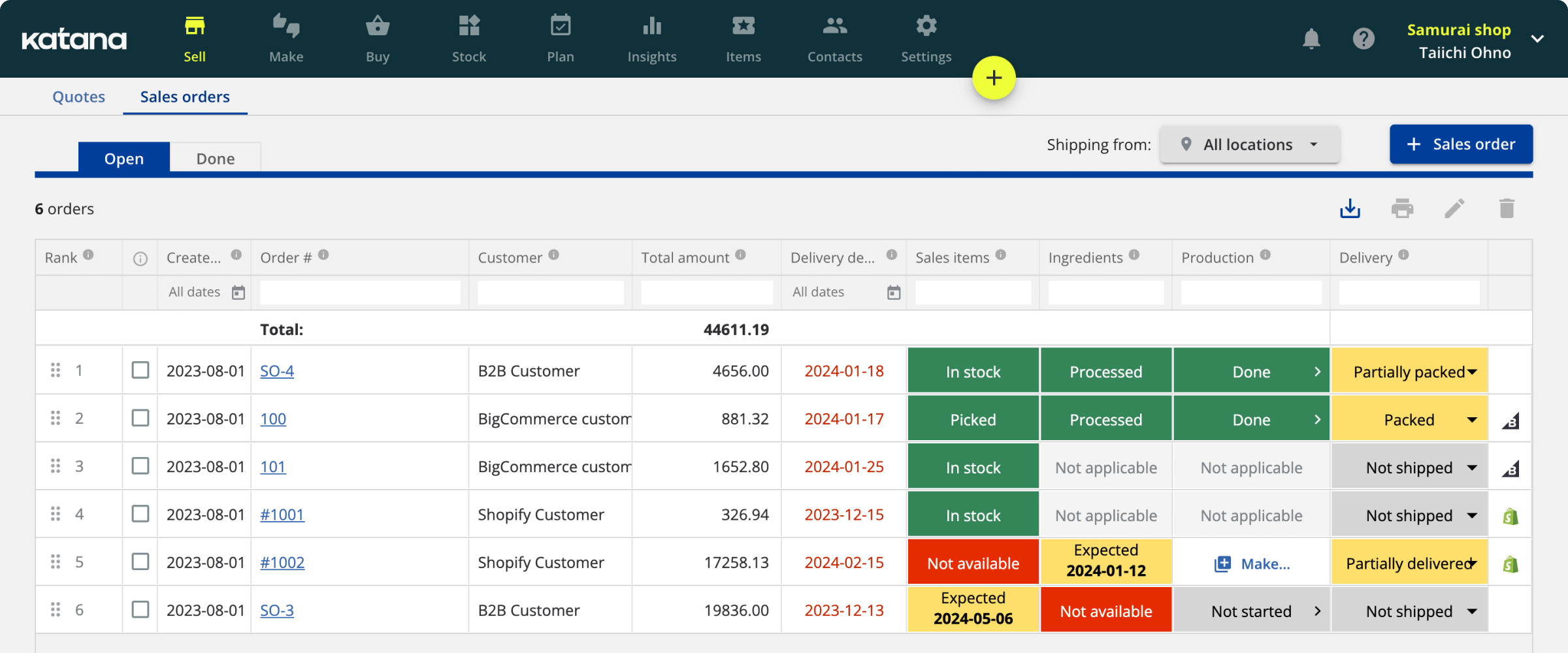Dropshipping inventory management explained
Dropshipping is a retail fulfillment method where a store doesn’t keep the products it sells in stock but instead purchases the products from a third party and has them shipped directly to the customer. Learn all about it below.

Henry Kivimaa

Dropshipping is a popular business model where an online retailer fulfills orders but doesn’t keep products in stock. Instead, they redirect customer orders to partner suppliers, and they ship the products directly to the buyer.
Consequently, the dropshipper acts as an intermediary between buyer and supplier, and this is one of the reasons why it’s such a popular way of doing business in the e-commerce industry.
This is how it works, in a nutshell — anyone can set up a dropshipping business from any location, as long as they have an internet connection. Since there is no need for inventory storage space, all it takes is setting up an online store, selecting preferred suppliers and choosing the products you want to sell, generating engaging product listings, and handling customer orders.
It’s an easy setup that brings manifold advantages to both buyers and sellers, and it works — research shows that the dropshipping industry is expected to reach a whopping $558 billion in market valuation by 2025.
However, there are also certain challenges that dropshipping businesses have to overcome, especially as the industry becomes increasingly competitive and customer expectations are higher than ever.
What is dropshipping inventory management?
Dropshipping inventory management is the process of handling inventory in a dropshipping business model. Instead of stocking products, retailers maintain a virtual inventory and partner with suppliers who handle product storage and shipping directly to customers as orders are received.
Effective synchronization of product availability and pricing between the retailer’s website and the supplier is essential for smooth operations.
Since dropshippers often have no control over their suppliers’ stock, managing inventory is one of the biggest challenges in this industry. Ordering and paying for products that turn out to be out of stock can make customers lose trust in your business and damage your brand’s reputation. In this highly competitive industry, that can spell disaster.
Not holding inventory is one of the reasons dropshipping is such a lucrative model. However, it’s also one of the reasons why many dropshipping businesses fail.
Effective dropshipping management involves selecting reliable and trustworthy suppliers, keeping real-time inventory records, handling orders and returns, and forecasting product demand to avoid stockouts and overstocking. To ensure that your dropshipping business runs smoothly and to build a long-lasting relationship with customers, you must find ways to manage all these aspects effectively.
Setting up an inventory management system can help dropshipping businesses avoid inventory-related issues that impact customer satisfaction and damage their reputation and their bottom line. Such a system can help business owners know what the supplier has in stock, where it’s located, how much inventory they have, and the status of their orders.
Efficient inventory management software like Katana can sync with a supplier’s inventory data, feeding information directly into the online seller’s store and keeping your stock information updated in real time. However, this also means that the supplier needs to take all the steps to make sure their inventory information is up to date.
Download the ultimate guide to inventory management
A comprehensive ebook with everything you need to know about inventory management.
Why is dropshipping inventory management important?
Inventory management is critical for dropshipping businesses, as it can help build and sustain customer satisfaction and trust, prevent operational inefficiencies, control costs, and build strong supplier relationships. But how can you achieve this?
Keeping track of stock levels
Dropshipping inventory management prevents sellers from running out of stock and losing repeat customers because of it. If someone places an order, but the supplier doesn’t have the products in stock at that time, you end up with a dissatisfied customer, and if it happens too often, you might end up losing clients and damaging your brand’s reputation.
Avoiding overstocking and understocking
An inventory management system also allows sellers and suppliers to keep tabs on product demand and avoid overstocking or understocking. Overstocking can lead to financial losses due to unsold inventory and excessive carrying costs, while understocking can lead to dissatisfied customers and missed sales opportunities for both the supplier and the dropshipper.
Controlling costs
Overstocking can lead to elevated storage costs and tied-up capital, which can ultimately damage a supplier’s bottom line and cause financial losses. At the same time, understocking can mean missed sales opportunities and lost customers, so it’s crucial to strike a balance and make sure that inventory levels are on par with customer demand. Inventory management software can help sellers and suppliers keep track of stock levels in real time, optimizing costs and maximizing profit.
Processing orders and product returns
Keeping tabs on existing inventory is essential to fulfilling orders in a timely fashion and building customer loyalty. Through dropshipping inventory management, retailers can process orders, forward them to their suppliers, and track the status of these orders in a timely and efficient manner. An inventory management system with serial number tracking also enables sellers to quickly process returns and refunds, as well as product exchanges or replacements, to maintain customer loyalty and satisfaction.
What are the benefits of dropshipping?

One of the biggest advantages of running a dropshipping business is the fact that it’s an easy-to-set-up business model. Because you don’t hold inventory when dropshipping, there is no need to rent out a warehouse or storage space — this type of business can be operated from any location with a stable internet connection.
Furthermore, overhead expenses are quite low when it comes to dropshipping since sellers don’t have to deal with purchasing inventory, managing fulfillment centers, hiring staff, and so on. All that’s really required is an internet connection and a laptop.
Because dropshippers don’t have to purchase inventory and keep items in stock, there are no limitations to the types of products you can sell to potential customers.
Depending on trends, market conditions, and customer demand, sellers can update their list of products without worrying about issues such as unsold inventory or low stock. If suppliers stock a certain product that’s in high demand, you can add it to your list of products at no additional cost anytime you want.
Dropshippers don’t need to worry about purchasing or managing inventory, but they do rely on suppliers to keep their inventory list up-to-date, and this can be a challenge.
This is why a dropshipping inventory management system is critical to keeping customers satisfied and avoiding canceled orders due to under or overstocking. Such a system allows sellers to know what products their suppliers have in stock in real time and adjust their online store catalog accordingly.
Inventory management software like Katana can also sync with the supplier’s inventory list to make sure that stock levels are always up to date in your e-commerce store. This allows customers to place orders on products that are in stock and eliminates the possibility that orders will be placed for items that aren’t available.
Want to see Katana in action?
Book a demo to get all your questions answered regarding Katana’s features, integrations, pricing, and more.
What are the challenges of dropshipping?
A dropshipping business is easy to set up, requires minimal investment, and boasts low overhead costs, but it also comes with certain challenges. Since the seller doesn’t hold inventory, they must rely on suppliers to keep their inventory updated and fulfill orders in a timely and professional manner.
This means that sellers have no real control over product availability, product quality, how the products are packaged, how and when they are shipped, or how the return and refund process unfolds.
This lack of control makes dropshippers vulnerable in case of canceled orders, shipping delays, or damaged products. Any issues that might appear in the process can result in loss of customer trust and damaged brand reputation because the order is placed through the seller, and they are ultimately responsible for it.
A common issue that might arise is when a customer places an order for multiple items and receives them from different suppliers at a higher shipping cost than expected.
Because the dropshipper has no control or visibility of the supplier’s inventory, they can end up with a dissatisfied customer. This is an issue that can be avoided by implementing dropshipping inventory management software that syncs the retailer’s store with the supplier’s inventory so that the customer can make an informed decision and know if they’ll be charged extra for shipping.
Another downside to dropshipping is that profit margins are lower compared to traditional retail business models.
This is because droppshippers are forced to sell goods at low prices to compete with other stores carrying the same products. Since dropshipping businesses are so easy to set up, the market is highly competitive. There are many retailers selling goods at very low prices in an attempt to gain customers, build brand awareness, and start making revenue as fast as possible.
Best practices and tips

To ensure you maximize your chances of succeeding, here are some of the best practices you should take into account.
Supplier selection
Forging strong, long-lasting relationships with suppliers is the best way for businesses in the dropshipping industry to build customer loyalty and trust. Careful selection of suppliers is critical to avoiding issues like order cancellations, low product quality, shipping delays, and damaged products.
Choosing reliable, professional suppliers to work with can be challenging, so it’s important to do a bit of research to determine whether a supplier is trustworthy and can fulfill orders in a professional manner.
Market research and trends
Another tip for business owners in the dropshipping industry is to constantly research the market and your chosen niche and to look at trends in consumer demand.
This is crucial to making sure you sell products that customers are actually looking for and adapt to meet this demand. Keeping up-to-speed with trends and changes in the market and the economy can also enable sellers to predict and anticipate demand for certain products and craft effective marketing strategies for the items they sell.
Leveraging technology
Embracing technology and implementing an effective inventory management system is the best way to keep track of a supplier’s stock levels in real time, thus ensuring customer orders are completed.
Syncing your online store product data to your suppliers’ stock eliminates the possibility of overselling and order cancellations while building customer loyalty and gaining repeat clients.
Automation can streamline internal processes and customer interaction, while a dropshipping order management system can enable both sellers and buyers to oversee the status of their orders in real time.
How to elevate your dropshipping inventory management with Katana

Some of the most common challenges faced by dropshipping business owners can be traced back to inventory management issues.
Customers ordering products that aren’t really in stock, customers receiving the wrong products or getting orders from multiple suppliers with extra shipping charges, customers returning products due to quality issues or delays in shipping — many of these problems can be avoided by implementing inventory management software that provides accurate information on a supplier’s stock levels and order status.
With cloud inventory software, you can provide accurate stock-level information to your customers and ensure orders are fulfilled and clients are satisfied. You can eliminate the risk of overselling by syncing with your suppliers’ inventory data and ensuring your online store shows real-time product availability information.
Moreover, features like serial number tracking can help you keep tabs on all orders and individual items, eliminating the risk of the wrong products being delivered and preventing returns and refunds.
At the same time, an inventory management system offers you access to historical data, allowing you to track metrics like sales performance, costs, and revenue, and ultimately help you identify your best sellers and your underperforming products.
In addition, Katana integrates seamlessly with the best business tools out there, including Shopify and QuickBooks Online. This ensures all your data is kept in sync, and you can manage your entire dropshipping business from an intuitive centralized platform.
Give your business the best chance of success. Book a demo now with Katana’s cloud inventory platform.

Henry Kivimaa
Table of contents
Get inventory trends, news, and tips every month
Get visibility over your sales and stock
Wave goodbye to uncertainty by using Katana Cloud Inventory for total inventory control
